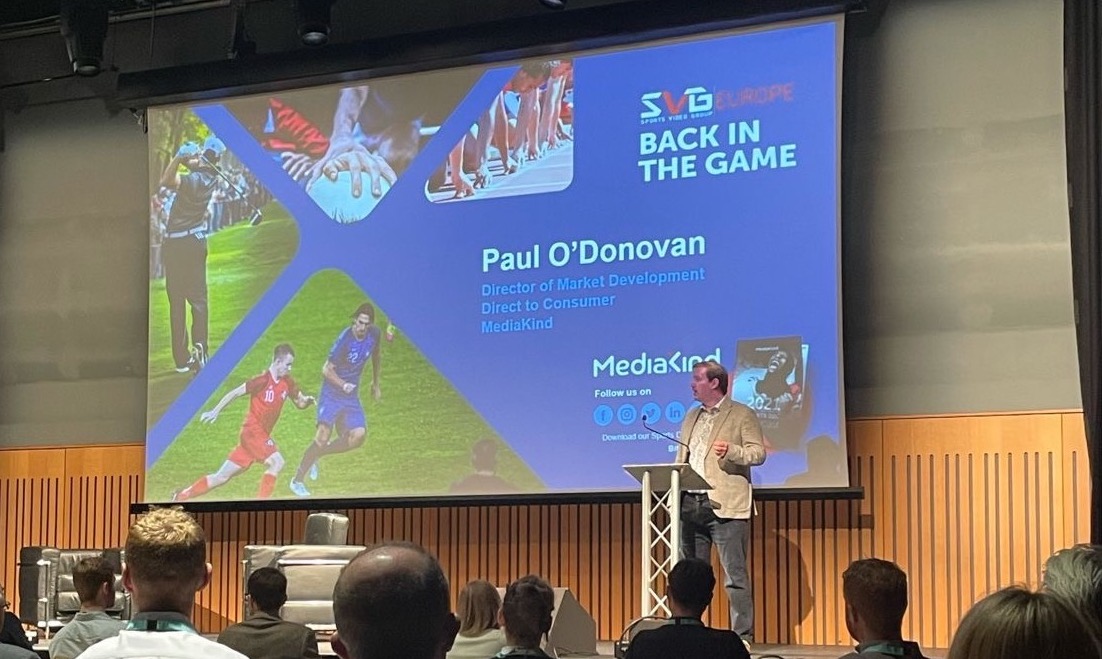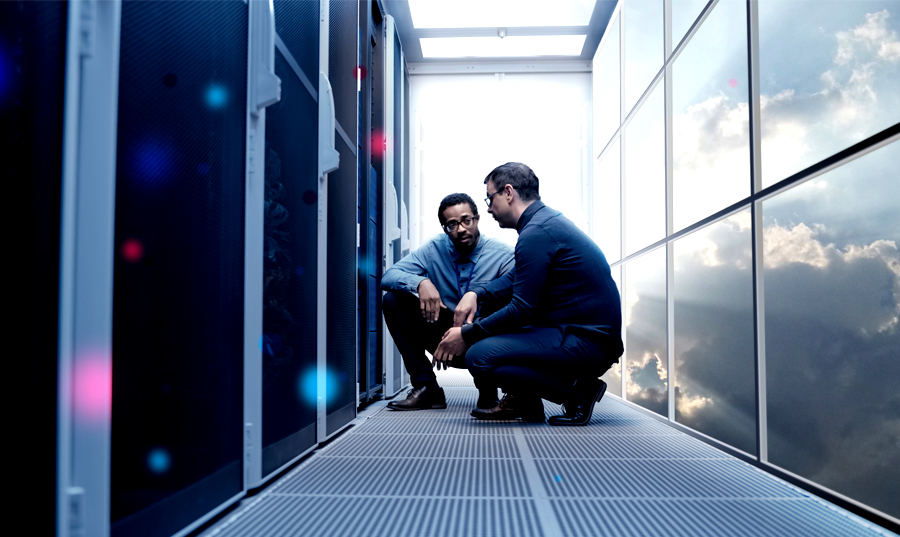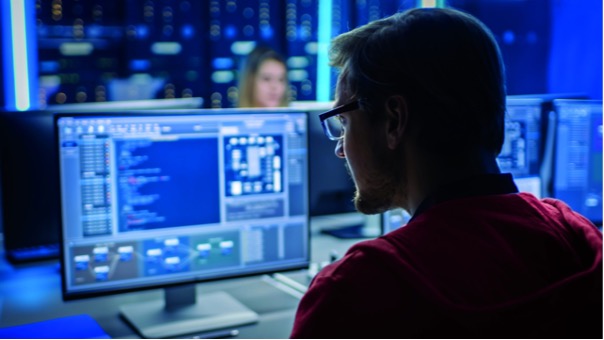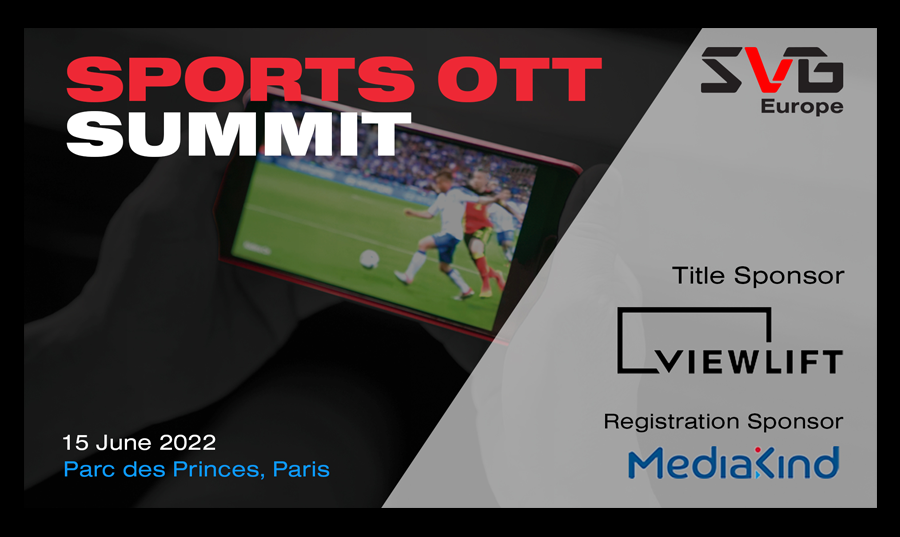Back in June, I was preparing for what I hoped would be a fantastic summer of live sporting events. It certainly hasn’t disappointed so far! It’s been great to see so many instances of fans being welcomed back into stadiums and arenas in recent months, particularly in the UK.
There have been many personal highlights for me; a 100,000+ crowd at Silverstone to watch Lewis Hamilton take home the win in a tense finish to the British Grand Prix. Ashleigh Barty came through to be crowned Wimbledon women’s tennis champion. Perhaps less fondly, I should probably also include Italy taking home the glory at Euro 2020 – although it was a great tournament! And now, even without in-stadium fans, we’re in the middle of the greatest sporting event of them all – the Olympic Games.
Not only are live sports back on the cards, but conferences and shows are also returning to diaries and calendars. Last week, I had the pleasure of attending and delivering the opening presentation at SVG Europe’s Back in the Game event held in London and sponsored by MediaKind. It was fantastic for the industry to be in the same place for the first time in 18 months. Myself, David Symons and Jordan Williams really appreciated meeting up with fellow sports media specialists, partners, and industry friends once more.
Pandemic brings new challenges
Of course, the pandemic has bought several fresh challenges for sports broadcasters, rights-holders, and producers, not least with social distancing and travel restrictions forcing many production crews to isolate. So, it was fascinating to hear from various executives across the sports broadcast landscape and learn about their experiences of the past 18 months.
Jamie Oakford, CEO at production company Sunset + Vine, shared some fascinating insights into how his teams leveraged new technologies and camera techniques to capture the emotion and excitement of football, both with and without fans present. He also shared how digital technologies and social media are impacting the way live sports content is received.
For example, his decision to cut the feed to a visibly upset young German girl in the crowd following Germany’s Euro 2020 defeat to England was an innocent attempt to capture the emotion of the occasion. However, with the prevalence of social media, the short clip quickly became a viral sensation and achieved international news attention – albeit negatively. It’s a stark warning around the responsibilities that sports production staff face and the split-second decisions they must make when building sporting narratives. There are more insights into his directing style in this SVG Europe interview.
The growth of Remote Integration Models
One notable theme was the ubiquity and ease that the industry feels around Remote Integration Models (REMI). It is now the lifeblood of our industry. Remote workflows enable production crews to produce live games from almost anywhere worldwide – whether in a dedicated production studio or even from their own home – hundreds and sometimes thousands of miles away from the live event itself. We saw how it was effectively delivered during the Super Bowl earlier this year and the ongoing Olympic Games. You can learn more about MediaKind’s work in remote production by reading our application paper.
However, there are still unavoidable challenges to production workflows. CTV Outside Broadcast’s Hamish Greig didn’t hold back in reiterating the impact of production bubbles and the recent ‘pingdemic’ in the UK. The pingdemic has seen record numbers of people being asked to self-isolate when coming into contact with someone that had subsequently tested positive with Covid-19. In recent weeks, Hamish described the difficulties in facilitating the production crews needed to broadcast live sport and the difficulties in delivering viable alternative set-ups. The bottom line? The value of a production crew, whether physically or remote, remains fundamental to any successful sports broadcast.
MediaKind’s involvement in the summer of sport 2021 to date
At MediaKind, we’ve not just been watching the return of sports to our screens. We’ve been working with our customers and partners across the globe, supporting them with robust solutions to ensure they deliver the best possible experiences to consumers. While Euro 2020 may not have seen football come home for the England team, it was a huge success for our customer, Altice Portugal, and its MEO service! MEO leveraged our Video Storage and Processing Platform (VSPP) to reduce the end-to-end latency of its live football content and enhance the overall quality of its streaming coverage to customers in Portugal. The solution enabled MEO to deliver the content using ABR technology for OTT streaming, leading to a significantly improved viewing experience for all customers watching via Android TV.
Latency remains such a huge challenge for live sports delivery to mobile and second-screen devices. I think my personal experience of the penalty shoot-out during the Euro 2020 final would have been very different if I had heard the result of each shot seconds before I’d seen it on my TV at home! Thanks to recent advances in compression and video processing technologies, such as Common Media Application Format (CMAF) delivery and HTTP 1.1. Chunked Transfer Encoding (CTE) for MPEG DASH, MEO significantly reduced the minimum size of its delivered segments down to an individual chunk. This ensured that the latency of the live content could be captured and delivered in a matter of seconds.
We are delighted to have played a key role in enabling NBC Olympics to deliver its production of the Tokyo Games over the past few weeks. Our video processing and advanced modular receiver technologies form part of a high-quality satellite distribution solution that is being used to enable a high-performing, ultra-reliable broadcast to viewers throughout the United States. In addition, our specialist engineers are also aiding with the installation of equipment and system set-up, providing 24/7 multi-site support throughout the competition.
What does the future of sports broadcasting look like?
The big question many had in mind at last week’s SVG event was whether we would soon, or ever, return to a pre-Covid ‘normal’ in live sports broadcasting. The takeaway? Probably not – but that doesn’t have to be a bad thing! Our industry should be proud of what it’s achieved over the past year. The consensus from attendees is that broadcasters and event producers should continue to merit the innovations we’ve achieved during the lockdown.



